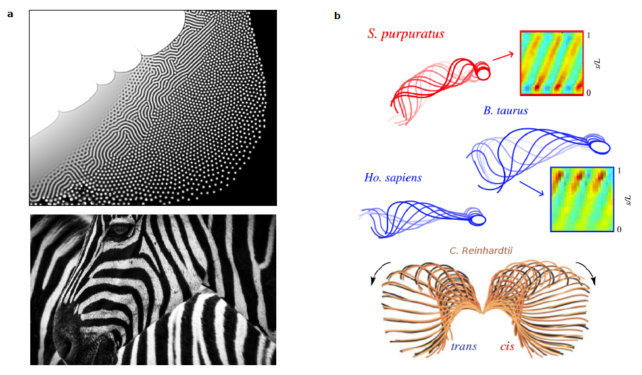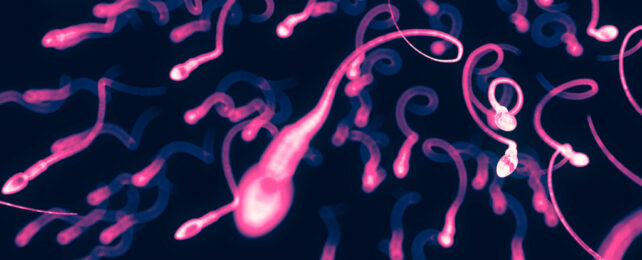Everywhere they look mathematicians seem to find patterns in nature. But a strange link between how zebra stripes form and how sperm swim is almost as weird as it gets.
Taking cues from how stripes and spots are thought to form in organisms as diverse as zebra and giant pufferfish, the researchers analyzed the animated patterns made by the whirring flagellum of sperm.
The work harks back to Alan Turing, the English mathematician who, amongst other things like cracking codes, proposed an idea for how squiggly or spotty patterns arise in nature.
Turing described what are now known as reaction-diffusion systems, to suggest biological patterning could result quite simply from the reaction of two molecules diffusing across space.
"In 1952, Turing unlocked the reaction-diffusion basis of chemical patterns," says Hermes Bloomfield-Gadêlha, an applied mathematician and robotics engineer at the University of Bristol in the UK who completed the research along with graduate student James Cass.
"We show that the 'atom' of motion in the cellular world, the flagellum, uses Turing's template to shape, instead, patterns of movement driving tail motion that pushes sperm forwards."
Before we go much further, it's worth noting that despite Turing's prowess, reaction-diffusion models have been long debated, with experimental biologists questioning how realistic they are. As with any mathematical model, they simplify the complexity of nature into a few parameters.
That said, mathematical models can be a useful tool for conceptualizing complex behaviors, like the swiveling motion of a sperm's tail, the flagellum.
"By isolating the essential elements of the flagellar beat in a minimal model, we discovered that reaction-diffusion dynamics account well for the observed flagellar beating patterns," Cass and Bloomfield-Gadêlha explain in their paper.
"The oscillatory dynamics are analogous to those observed in chemical systems."
Instead of chemical species freely reacting and diffusing in space, what Cass and Bloomfield-Gadêlha describe are the "tug-of-war reaction-kinetics" of molecular motors that are anchored in the flagellar structure, and the shear deformation that they generate, which diffuses away down the slender, bendy appendages.

In other words, the beating motion of a flagellum starts with molecular motors at its base and creates oscillations that whip down its floppy structure in waves. This process can be modeled with reaction-diffusion dynamics and, as you can see in the image above, these movements create band-like patterns.
Recognizing the limitations of their model, however, the researchers went one step further, comparing their simulations to experimental data from published studies, of sperm and Chlamydomonas reinhardtii, which is a single-celled green algae.
Recent studies have revealed just how complex the machinations of sperm are, describing the axoneme, the molecular machine that powers flagellum and sperm motility, as a "veritable molecular behemoth comprised of hundreds of different proteins."
Yet Cass and Bloomfield-Gadêlha found their simplified model of flagella mechanics sufficiently captured flagella movement, producing beating patterns that mimicked those of eukaryotic flagella.

"We show that this mathematical 'recipe' is followed by two very distant species – bull sperm and Chlamydomonas, a green algae that is used as a model organism across science – suggesting that nature replicates similar solutions," says Bloomfield-Gadêlha.
While these models might sound like some trivial fun, simulating the mechanisms of sperm flagella could have serious implications for our understanding of sperm motility, which affects male fertility.
The study has been published in Nature Communications.
